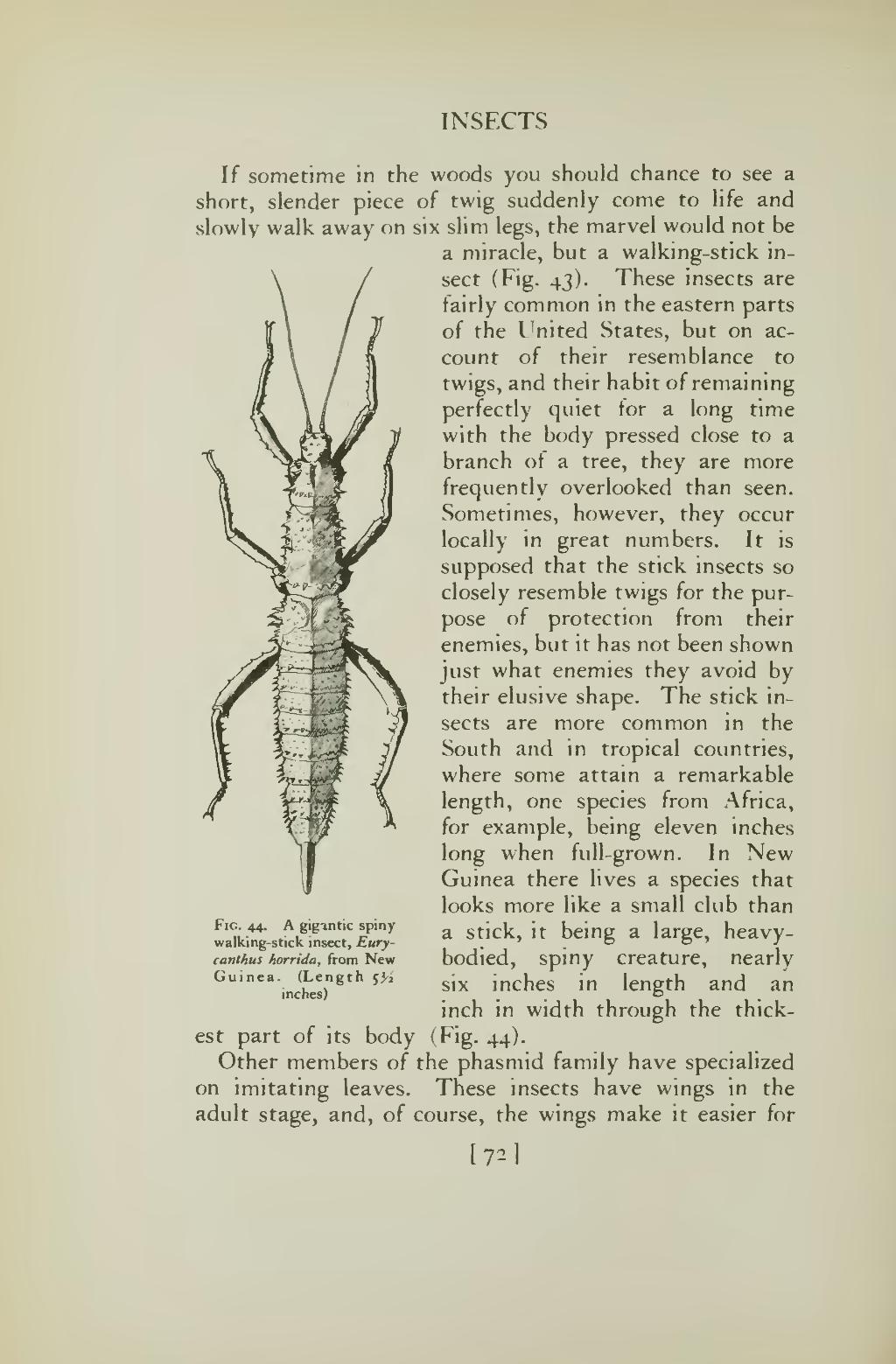INSECTS
Fig. 44. A gigantic spiny walking-stick insect, Eurycanthus horrida, from New Guinea. (Length 5½ inches)
If sometime in the woods you should chance to see a short, slender piece of twig suddenly come to life and slowly walk away on six slim legs, the marvel would not be a miracle, but a walking-stick insect (Fig. 43). These insects are fairly common in the eastern parts of the United States, but on account of their resemblance to twigs, and their habit of remaining perfectly quiet for a long time with the body pressed close to a branch of a tree, they are more frequently overlooked than seen. Sometimes, however, they occur locally in great numbers. It is supposed that the stick insects so closely resemble twigs for the purpose of protection from their enemies, but it has not been shown just what enemies they avoid by their elusive shape. The stick insects are more common in the South and in tropical countries, where some attain a remarkable length, one species from Africa, for example, being eleven inches long when full-grown. In New Guinea there lives a species that looks more like a small club than a stick, it being a large, heavy-bodied, spiny creature, nearly six inches in length and an inch in width through the thickest part of its body (Fig. 44).
Other members of the phasmid family have specialized on imitating leaves. These insects have wings in the adult stage, and, of course, the wings make it easier for
[ 72 ]

